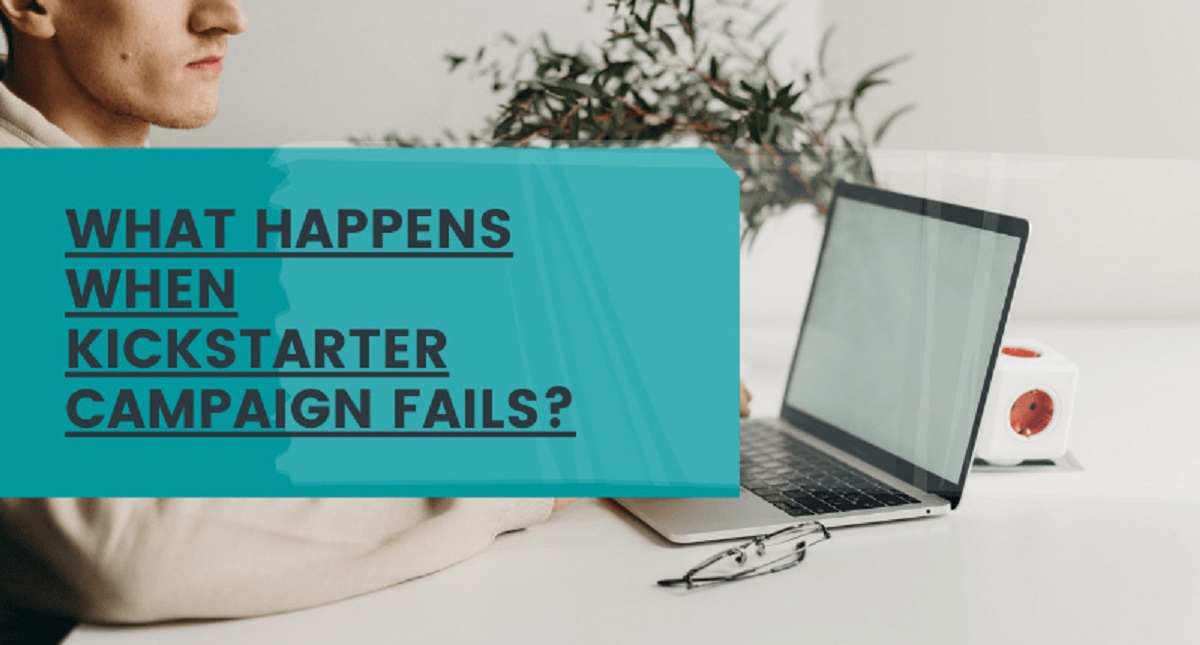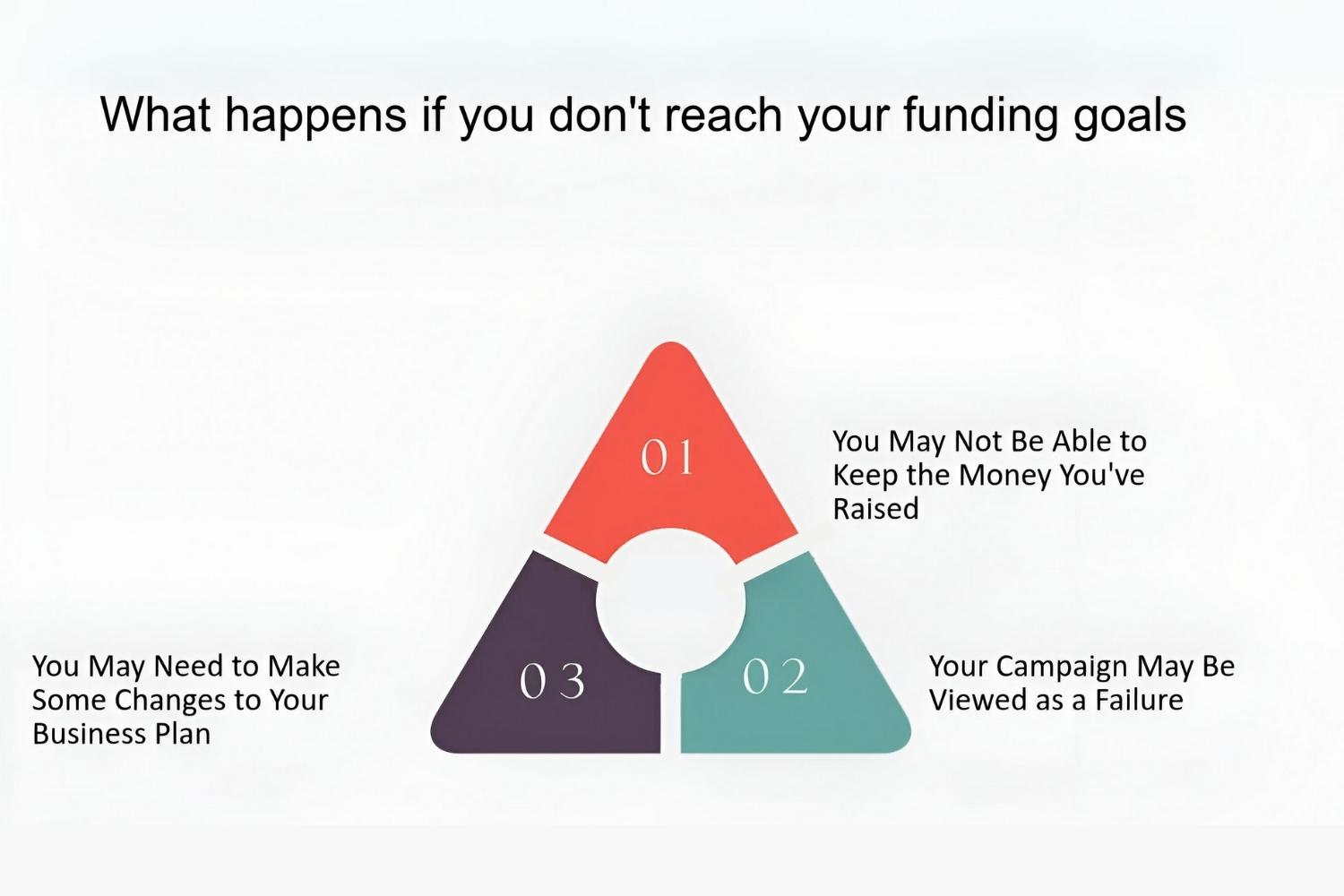Introduction
Launching a crowdfunding campaign can be an exciting and potentially lucrative endeavor. With the right idea and strategy, it is possible to raise substantial funds from a community of enthusiastic backers. However, not all crowdfunding campaigns achieve the success they initially hoped for. From failing to meet funding goals to struggling with poor engagement, various factors can contribute to a campaign’s lackluster performance.
Understanding the reasons behind a crowdfunding campaign’s failure is crucial for entrepreneurs and creators looking to launch a successful campaign. By identifying these factors, you can avoid making similar mistakes and increase the chances of reaching your funding goals.
In this article, we will explore some common pitfalls that can derail a crowdfunding campaign. From inadequate planning to ineffective communication, we will delve into these areas and offer insights on how to avoid them. Whether you are planning to start your first campaign or have experienced setbacks in the past, this article aims to provide valuable tips to maximize your chances of success.
Lack of Planning
One of the primary reasons why crowdfunding campaigns can fail is due to a lack of proper planning. Without a well-thought-out strategy, it becomes challenging to attract and engage potential backers. Many campaigners make the mistake of underestimating the importance of planning and rush into launching their campaign without considering key elements.
A crucial aspect of planning is setting realistic and achievable funding goals. It is essential to determine how much funding is required to bring your project to life and conduct thorough research to estimate the costs involved. Failing to set reasonable goals can lead to a campaign that feels unrealistic, causing potential backers to lose interest.
Another element of planning is timeline management. Creating a detailed timeline helps you establish a clear roadmap for your campaign, outlining important milestones, such as pre-launch activities, the campaign launch date, and post-campaign fulfillment. This ensures that you have enough time to create compelling content, build momentum, and address any unexpected challenges that may arise.
Additionally, researching and identifying the target audience is crucial for a successful campaign. Understanding your audience’s demographics, interests, and preferences allows you to tailor your messaging and rewards to resonate with them. It is important to conduct thorough market research to identify your niche and position your campaign effectively.
Moreover, planning should also encompass creating compelling and visually appealing campaign assets. This includes designing an eye-catching campaign page, developing engaging video content, and crafting persuasive campaign copy. These elements play a significant role in capturing the attention of potential backers and persuading them to support your campaign.
By investing time and effort into planning every aspect of your campaign, you set yourself up for a higher chance of success. Starting with a solid foundation gives you the confidence to navigate through the challenges that lie ahead, and increases the likelihood of connecting with your target audience in a meaningful way.
Inadequate Marketing Strategy
A common reason why crowdfunding campaigns fail is an inadequate marketing strategy. Without a well-defined plan to promote your campaign, it becomes difficult to generate enough awareness and reach your target audience. Many campaigners make the mistake of solely relying on the crowdfunding platform to bring in backers, neglecting other crucial marketing channels.
One important component of a successful marketing strategy is leveraging social media platforms. Building a strong presence on platforms like Facebook, Twitter, and Instagram allows you to engage with potential backers, share campaign updates, and create a sense of community around your project. Engaging content, such as behind-the-scenes footage or sneak peeks of your product, can generate excitement and encourage backers to share your campaign with their networks.
Another effective marketing tactic is reaching out to relevant influencers and bloggers in your niche. Collaborating with influencers who have a large and engaged audience can bring tremendous visibility to your campaign. This can be done through product placements, guest blog posts, or sponsored social media content. By tapping into their established network, you increase the likelihood of reaching potential backers who are genuinely interested in your project.
Additionally, utilizing email marketing can be a powerful tool to keep your existing backers engaged and encourage repeat contributions. Building an email list prior to launching your campaign and sending regular updates throughout the campaign period helps you stay connected with your audience. Offering exclusive perks or early-bird discounts to your email subscribers can incentivize them to support your campaign and share it with their networks.
Furthermore, implementing a targeted advertising strategy can significantly boost your campaign’s visibility. Platforms like Google Ads and Facebook Ads allow you to precisely target specific demographics and interests, ensuring that your campaign reaches the right audience. Running a well-optimized ad campaign can generate increased traffic to your campaign page and attract potential backers who are more likely to convert.
By developing a comprehensive marketing strategy that incorporates social media, influencer collaborations, email marketing, and targeted advertising, you can significantly enhance your campaign’s chances of success. The key is to proactively promote your campaign and leverage various marketing channels to increase visibility and engagement among your target audience.
Poorly Crafted Rewards
One critical aspect of a crowdfunding campaign is the rewards offered to backers. However, a common mistake that can lead to the failure of a campaign is offering poorly crafted rewards or failing to provide attractive incentives for potential backers.
When designing your campaign’s rewards, it is essential to think about what would genuinely appeal to your target audience. Offering unique and exclusive rewards that hold value for your backers can create excitement and increase the likelihood of their support.
One mistake campaigners often make is offering rewards that have little relevance to their project or target audience. It is crucial to align your rewards with your project’s theme and ensure they are compelling enough to attract backers. For example, if you are launching a tech gadget, offering early access to the product or personalized engraving can be more enticing than generic merchandise or unrelated perks.
Additionally, the reward tiers should be well-structured and offer a range of options to cater to different budget levels. For instance, having lower-priced tiers for backers who want to show support but may not have a large budget, as well as higher-priced tiers for backers who are looking for exclusive and premium experiences, can cater to a wider range of potential supporters.
Another important consideration is to set realistic fulfillment timelines for your rewards. Backers want to feel confident that they will receive their rewards in a timely manner. Overpromising and underdelivering can lead to disappointment and a loss of trust from backers, which can jeopardize the success of your campaign.
Lastly, it is essential to effectively communicate the value of your rewards. Use compelling imagery and engaging descriptions to highlight the unique features and benefits of each reward tier. Clearly explain why each reward is special and demonstrate how it ties back to your project. This helps potential backers understand the value they will receive in exchange for their support.
By creating well-thought-out and enticing rewards that align with your project and target audience, you can significantly increase the attractiveness of your campaign. Craft rewards that are relevant, varied, and valuable, and clearly communicate their benefits to potential backers. This will not only attract more support but also foster a sense of excitement and engagement throughout your campaign.
Insufficient Target Audience Research
Understanding your target audience is crucial for the success of any crowdfunding campaign. However, insufficient research and a lack of understanding about the preferences, interests, and demographics of your target audience can lead to a campaign that fails to gain traction and attract backers.
One common mistake is assuming that everyone will be interested in your project. It is important to conduct thorough research and identify your niche market. By honing in on a specific audience, you can tailor your messaging and campaign assets to resonate with them, increasing the chances of successfully capturing their attention.
When conducting audience research, consider factors such as age, gender, geographic location, and interests. Understanding these demographics will help you craft targeted marketing messages that resonate with your ideal backers. You can also use this information to identify platforms and communities where your target audience is most active, allowing you to focus your marketing efforts effectively.
Take the time to delve deep into your target audience’s preferences, pain points, and motivations. Understanding what drives them to support crowdfunding campaigns and what they value in a project will help you craft a compelling campaign story that resonates with their desires. Additionally, knowing their preferences can help you design the right rewards and incentives to attract their attention and support.
Furthermore, engaging in conversations and seeking feedback from your potential audience can provide valuable insights. Participate in relevant forums, online communities, or social media groups where your target audience is active. Pose questions, conduct polls, or even host virtual focus groups to gather feedback and opinions. This firsthand information can help shape your campaign strategy and ensure that it aligns with the needs and desires of your audience.
By conducting thorough target audience research, you can develop a deep understanding of who your ideal backers are and what they are looking for in a crowdfunding campaign. This knowledge will guide your campaign planning, messaging, and overall strategy, enabling you to create a campaign that resonates with your target audience and attracts their support.
Weak Storytelling
One crucial element that can make or break a crowdfunding campaign is the ability to tell a compelling story. Weak storytelling can result in a lack of emotional connection with potential backers and a failure to convey the value and impact of your project. Crafting a strong narrative is essential for capturing the attention and interest of your target audience.
When telling your campaign’s story, it is important to start with a captivating hook. Capture your audience’s attention from the very beginning by highlighting the problem or need your project aims to solve. Clearly communicate why your project is unique, innovative, or impactful, and how it addresses a specific pain point or desire.
Appealing to emotions is a powerful tool in storytelling. Share personal anecdotes or experiences that inspired your project, as this allows potential backers to connect with your story on a deeper level. Use storytelling techniques such as vivid imagery, relatable characters, and engaging dialogue to draw your audience in and make them feel emotionally invested in your campaign.
Visual elements also play a crucial role in storytelling. Utilize high-quality images, videos, and graphics to bring your story to life and make it more engaging. This not only captures attention but also helps potential backers visualize your project and imagine the impact it could have.
Moreover, clearly articulate the unique value proposition of your project. Explain how your product or idea stands out from existing solutions in the market and why it is deserving of support. Highlight the benefits and positive outcomes that your project offers, emphasizing how it can positively impact the lives of backers and society as a whole.
In addition to the overall campaign story, individual updates throughout the campaign period are equally important. Regularly communicate progress, milestones, and any challenges or hurdles faced. Keeping backers informed and engaged builds trust and reinforces their belief in your project’s potential for success.
Remember, a strong storytelling approach helps potential backers understand the essence of your campaign, feel connected to your vision, and believe in the impact your project can make. By using compelling narratives, engaging visuals, and clear communication, you can captivate your audience and increase the chances of their support.
Lack of Social Proof
Social proof is a powerful tool in influencing people’s decision-making. It plays a significant role in crowdfunding campaigns, as potential backers look for reassurance that others have shown support and have positive experiences with the project. A lack of social proof can hinder a campaign’s success and make it challenging to attract backers.
One form of social proof is testimonials or reviews from previous backers or customers. These testimonials provide evidence that your project delivers on its promises and garners positive feedback. Displaying these testimonials prominently on your campaign page can instill confidence in potential backers and increase the likelihood of their support.
Another form of social proof is media coverage or endorsements from reputable sources. If your project has received positive press or has been featured in influential publications, it is essential to highlight these achievements. Including logos of media outlets or mentioning notable endorsements can add credibility and generate trust in your campaign.
Additionally, showcasing the number of backers or the amount of funding raised can also serve as social proof. When potential backers see that many others have already supported your project, it creates a sense of validation and may encourage them to join in as well. Be transparent about the number of backers and the progress of your campaign to demonstrate its popularity and success.
Engaging with your backers and creating a sense of community can also contribute to social proof. Genuine and positive interactions with backers in the comments section or through updates can foster a strong community around your project. This sense of community can further motivate potential backers to contribute, as they see the active engagement and support from others.
Utilizing social media to showcase social proof is also crucial. Share posts and comments from satisfied backers, feature success stories, and encourage backers to share their experiences and excitement about your project. This user-generated content helps build trust and credibility, as potential backers see real people expressing their support and satisfaction.
By incorporating social proof into your crowdfunding campaign, you provide potential backers with evidence that your project is trustworthy, popular, and has a positive impact. Testimonials, media coverage, backer numbers, community engagement, and social media presence all contribute to building social proof. Establishing and emphasizing social proof can significantly increase the chances of attracting new backers and achieving success in your crowdfunding campaign.
Underestimating the Importance of Video
When it comes to engaging potential backers and effectively communicating your campaign’s message, video content is a powerful tool that should not be underestimated. Unfortunately, one common mistake in crowdfunding campaigns is underestimating the importance of video and either neglecting to create one or producing a low-quality video that fails to capture attention and convey the project’s value.
Video is an engaging and visual medium that allows you to showcase your project in a dynamic and compelling way. It provides an opportunity to demonstrate your product, explain its features, and share the story behind your campaign. A well-crafted video can captivate viewers and create an emotional connection, enticing them to support your project.
When creating your video, it is crucial to keep it concise and engaging. Potential backers have limited attention spans, so aim for a video length that effectively communicates your key messages without losing viewer interest. Develop a script or outline that clearly outlines the problem your project seeks to solve, how your solution addresses it, and the positive impact it can make.
Visual elements play a vital role in the effectiveness of your video. Use high-quality footage or animations that showcase your product and its features. Incorporate visuals that tell a story, evoke emotions, and ignite excitement. Effective use of visuals can significantly enhance the persuasive power of your video.
A clear and compelling narrative is essential in your video. Craft a compelling story that not only highlights the problem your project solves but also connects with your viewers on an emotional level. Share personal anecdotes, testimonials, or success stories that illustrate how your project has the potential to make a difference. A well-told story can inspire viewers to become backers and actively contribute to your campaign.
Furthermore, don’t forget the importance of audio in your video. Clear and professional-quality sound production is crucial in ensuring your message is delivered effectively. Invest in good microphone equipment and ensure that background noise is minimized. A high-quality sound experience can significantly enhance the overall viewing experience and leave a positive impression.
Lastly, make your video shareable. Optimize it for different platforms and formats to maximize its reach and potential impact. Encourage viewers to share your video with their networks, expanding your campaign’s visibility and attracting new potential backers.
By recognizing the importance of video and investing in a well-crafted, compelling, and shareable video, you are likely to capture the attention and interest of potential backers. An engaging video that effectively communicates your project’s value and tells a compelling story can significantly increase your campaign’s chances of success.
Ineffective Communication
Effective communication is vital in a crowdfunding campaign, and the lack of it can hinder the success of your campaign. Ineffective communication can lead to confusion, disengagement, and a lack of trust from potential backers. It is crucial to establish clear lines of communication and provide timely and relevant information throughout your campaign.
One common mistake is a lack of transparency. Potential backers want to know how their contributions will be used and the progress of the project. Failing to provide regular updates or being vague about your plans can erode trust and discourage potential backers from supporting your campaign. Keep backers informed of important milestones, challenges faced, and the steps you are taking to overcome them.
Timeliness is also key in effective communication. Respond promptly to questions, comments, or feedback from potential or existing backers. Make them feel heard and valued by providing timely and helpful responses. Delayed or nonexistent responses can create frustration and a negative perception of your project.
Additionally, clarity in your messaging is essential. Clearly articulate the purpose, goals, and benefits of your project. Avoid using technical jargon or complex language that may confuse potential backers. Break down your message into digestible and easily understandable components, allowing your audience to grasp the value proposition of your project effortlessly.
Utilize various communication channels to reach your audience effectively. In addition to the crowdfunding platform, use social media, email newsletters, and your project website to provide updates and engage with potential backers. Each channel serves a different purpose and allows you to connect with different segments of your target audience.
Another aspect of effective communication is actively engaging with potential backers. Initiate conversations, ask for feedback, and encourage dialogue. Engaging with your audience not only helps build a supportive community but also provides insights and ideas that can improve your campaign.
Lastly, consider the tone and style of your communication. Use a friendly and approachable tone that reflects your brand and resonates with your target audience. Avoid coming across as too sales-focused or impersonal. Establishing a genuine connection through your communication can build trust and foster a positive relationship with potential backers.
By prioritizing effective communication throughout your campaign, you can build trust, engage potential backers, and create a positive perception of your project. Transparent, timely, and clear communication will help you establish credibility and keep your audience informed and engaged, increasing the chances of your campaign’s success.
Unrealistic Funding Goals
One common mistake that can lead to the failure of a crowdfunding campaign is setting unrealistic funding goals. While it’s natural to have ambitious aspirations, setting goals that are unattainable can deter potential backers and hinder your campaign’s success.
It’s crucial to conduct thorough research and accurately estimate the funds needed to bring your project to life. Consider all the costs involved, including production, manufacturing, marketing, and fulfillment. Taking the time to calculate your budget will help you set a realistic funding goal that aligns with your project’s needs.
Potential backers evaluate a campaign’s funding goal when deciding whether to support it or not. A goal that is too low may raise doubts about the project’s feasibility, while a goal that is too high can appear unrealistic or unattainable. Finding the right balance is crucial to instill confidence and motivate backers to contribute.
In addition to the funding goal, consider the crowdfunding platform’s fee structure, transaction fees, and rewards fulfillment costs. These additional expenses can significantly impact the overall funds required to successfully execute your project.
Moreover, consider the size and reach of your existing network and the potential for organic growth. Assessing the level of support you can reasonably expect from your network will help you determine the feasibility of reaching your funding goal. It’s also important to consider strategies to expand your reach and attract new backers beyond your immediate circle.
Setting realistic funding goals benefits both you and your potential backers. Achieving your funding goal is a significant milestone that generates momentum and builds credibility. It demonstrates that you have carefully planned your project and have the capability to deliver on your promises.
Finally, be transparent with your backers about how the funds will be utilized and how additional funds, if surpassing the initial goal, will be allocated. Clearly communicate the impact that reaching your funding goal will have on the project, and how it will allow you to enhance its quality or scale its reach.
By setting realistic funding goals, you increase the likelihood of attracting backers who see the value in your project and are more willing to contribute. It also helps you manage expectations and ensure that you have the necessary resources to deliver your project successfully.
Conclusion
Launching a successful crowdfunding campaign requires careful planning, effective communication, and a strategic approach to marketing and engaging potential backers. By avoiding common pitfalls and implementing the tips outlined in this article, you can increase the chances of achieving your funding goals and bringing your project to life.
Lack of planning can lead to unrealistic expectations and a lack of preparedness. Take the time to research, set achievable funding goals, and create a comprehensive timeline. Understand your target audience and craft rewards that resonate with them.
Developing a sound marketing strategy is crucial to ensure your campaign reaches its intended audience. Leverage social media, collaborate with influencers, and utilize targeted advertising to generate awareness and engage with potential backers.
Crafting a compelling story and conveying it through video is essential for captivating potential backers. Utilize visuals, storytelling techniques, and clear messaging to create an emotional connection and effectively communicate the value of your project.
Building social proof through testimonials, media coverage, and an engaged community can instill trust and credibility in your campaign. Providing timely and transparent updates, as well as actively engaging with your audience, fosters a supportive community and enhances the chances of success.
Finally, setting realistic funding goals based on thorough research and transparently communicating your project’s needs and impact can attract confident backers who believe in your project’s potential.
By implementing these strategies and understanding the potential pitfalls, you can position your crowdfunding campaign for success. With careful planning, effective marketing, and engaging communication, you can attract the support and funding necessary to bring your project to life and make a lasting impact.











![How Does Crowdfunding Work? [Beginner-Friendly]](https://robots.net/wp-content/uploads/2020/07/How-does-crowdfunding-work-300x212.jpg)













